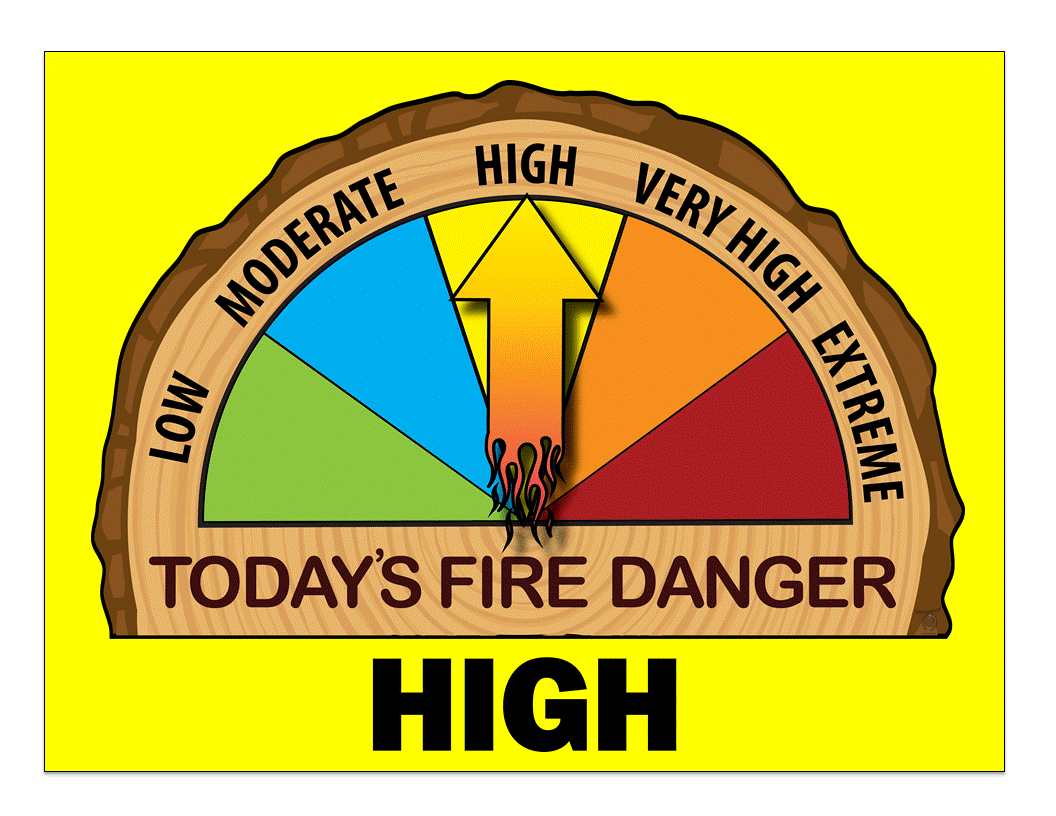Wildland Fire
Mission
To coordinate wildland fire prevention, mitigation and suppression activities in the County in partnership with Montana Department of Natural Resources and Conservation (DNRC) Fire Bureau.
Updated July 26, 2024
FIRE DANGER LEVEL : HIGH
FIRE RESTRICTIONS: NO RESTRICTIONS
BURN PERMIT SERVICE: OPEN
Fire Danger Levels
LOW Fire starts are unlikely. Weather and fuel conditions will lead to slow fire spread, low intensity, and relatively easy control with light mop up. Controlled burns can usually be executed with reasonable safety.
MODERATE Some wildfires may be expected. Expect moderate flame length and rate of spread. Control is usually not difficult and light to moderate mop up can be expected. Although controlled burning can be done without creating a hazard, routine caution should be taken.
HIGH Wildfires are likely. Fires in heavy, continuous fuel, such as mature grassland, weed fields, and forest litter, will be difficult to control under windy conditions. Control through direct attack may be difficult but possible, and mop up will be required. Outdoor burning should be restricted to early morning and late evening hours.
VERY HIGH Fires start easily from all causes and may spread faster than suppression resources can travel. Flame lengths will be long with high intensity, making control very difficult. Both suppression and mop up will require an extended and very thorough effort. Outdoor burning is not recommended.
EXTREME Fires will start and spread rapidly. Every fire start has the potential to become large. Expect extreme, erratic fire behavior. NO OUTDOOR BURNING SHOULD TAKE PLACE IN AREAS WITH EXTREME FIRE DANGER.
- Fire restrictions definitions
- Allowed activities during restrictions
Open burning, defined as a fire larger than 48 inches in diameter for the purpose of burning debris or clearing fields for personal or agricultural purposes, requires a permit within Carbon County. We have adopted the State’s burn permit system to issue and activate permits. You must first purchase the permit and then activate it the day you intend to burn.
THE BURN PERMIT SERVICE IS CURRENTLY CLOSED DUE TO ABNORMALLY HIGH TEMPERATURES AND DRY FUELS.
Permits may also be purchased in person at the following locations:
- Carbon County Personal Services Building
10 S Oakes, Red Lodge
- Carbon County Administration Building
17 11th St W, Red Lodge
- Carbon County Sheriff’s Office
102 Broadway Ave N, Red Lodge
- Carbon County Extension Office
202 State St, Joliet
- Bridger Public Library
119 W Broadway Ave, Bridger
Click HERE to open a Google map showing purchase locations
Frequently Asked Questions
Wildland fire suppression in the County is a cooperative effort. While most suppression activities are done primarily by the nine rural fire districts that exist in the County, we also provide and receive mutual aid from neighboring counties, the State and federal land management agencies.
Seven of the nine fire districts in Carbon County have fire departments while the other two, Roscoe and Whitehorse, contract with fire departments outside of the County to provide fire protection. Red Lodge Fire Rescue is a combination department consisting of paid staff and volunteers while all the other rural fire districts are made up entirely of volunteers.
The County has an ongoing fire control agreement with the State of Montana’s Department of Natural Resources and Conservation (DNRC) to suppress fires on State and private lands which is referred to as the County Co-op. The County also has mutual aid agreements in place with its federal partners including the Bureau of Land Management, US Forest Service, National Park Service and US Fish and Wildlife Service. We rely on mutual aid support from our neighboring counties in both Montana and Wyoming.
Community Wildfire Protection Plans, or CWPPs, are a crucial planning document to prepare communities for wildfire. Creating and regularly updating a CWPP allows a community to:
- Influence how land is managed on federal and state lands for wildfire risk reduction
- Identify and map wildfire hazards
- Identify effective wildfire risk mitigation strategies
- Be eligible for certain nationally competitive grants.
Carbon County’s CWPP was last done in 2013 but an online, dynamic revision will soon be underway in 2024 once funding is secured.
- 2013 CWPP (as part of the Pre-Disaster Mitigation Plan)
- 2024 CWPP Revision (in progress)

